7 Tips to Prepare your Yard for Winter
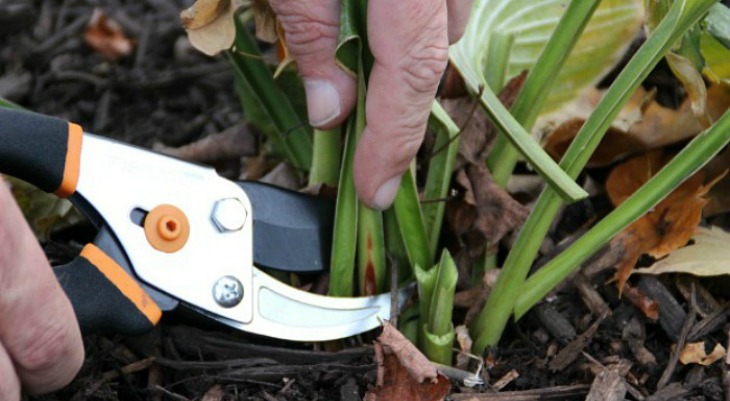
Putting your yard to bed for the winter is one of the most overlooked tasks while also being one of the most beneficial tasks when done correctly. So settle in, kick your feet back, here are 7 Tips to Prepare your Yard for Winter. Click here for your FREE garden and landscape journal- the first step to gardening success!
While we live in northern Indiana, (Zone 5 – 6) and much of what I discuss here will be focused on this area, every bit of information I share is applicable and can be adapted to most areas of the country. These tips are the basis for a healthy yard, both the grass and the perennial flowers will be taken care of and flourish when the warming sun of Spring peels away the dreary cold of Winter. So let’s pull on our gloves and head out into the yard and spend one more afternoon preparing the yard for Winter.
The Lawn
Mowing
Many homeowners mistakenly assign a final date for mowing, and while there are some grasses, particularly warm season grasses that will go dormant and stop growing once the weather turns chilly. The cool season grasses that are the mainstay of lawns like bluegrass and fescue prefer cooler climates and will continue to grow at a slow pace until the ground freezes. So it is beneficial to maintain a 10-14 day mowing schedule until then. Your cutting height should be at the minimum height for the grasses you are mowing. This provides several benefits…
- Any lawn litter such as leaves will be kept at a minimum so as not to smother areas of your lawn.
- In areas that receive snow the short height of your grass will reduce the incidence of fungus damage.
Aeration
Aeration at it’s simplest is opening up the soil and promoting a better environment for the roots of the grasses. Whether you prefer a coring style or slicing type aeration, (my preferred type is coring) this task only needs to be done occasionally and only when one or both of the following criteria are met. Your soil is prone to compaction because of either excessive traffic, or the thatch from the lawn clippings and litter exceeds 1/2 inch in depth. Performing this task at any other time is a waste of time and money.
Fertilization
There are many schools of thought when the topic of fertilizing a residential lawn is discussed. In my opinion your lawn should be spoon fed, applying every 45 days throughout the growing season, which in our area is from late March till the middle of November. With each fertilizer application there is a different goal in mind and different fertilizer required. From the early Spring application that has a higher amount of nitrogen for quick green up along with pre-emergence weed control all the way to the final application of the year which will have a lower level of nitrogen so we don’t promote too much growth but it also has a greater amount of potassium to help the roots of the grasses get ready to survive the harsh winter weather.
Leaves
Oh the bane of fall, the only individuals that like the falling leaves of fall are kids, at least the ones that get to play in the piles we rake together. Leaf removal or mulching is the most time consuming task for the average homeowner, and rest assured that the more time you invest in removing and keeping leaves from smothering the grass is well worth it and your effort will be repaid in a lawn free of bare ground in the Spring. You really only have two options for removing leaves from your yard.
- Mulching – Redistributing the leaves back into the lawn is the easiest and most beneficial way to handle them. But beware, if you do not keep up with them and stay on a consistent schedule there will come a time when there will be a layer of leaves on your lawn that is too thick to be effectively mulched. I can’t tell you exactly how thick this layer will be because it really depends on the types of leaves you are mulching and the equipment you have. Only experience can answer that question, I will only tell you that if you cannot chop the leaves up into pieces less than 1/2 inch with two passes of your mower then you should rake the bulk of the leaves off prior to mulching.
- Raking – Ugh! My advice is to buy a good rake and 8’x10′ poly tarp. This is the most efficient way I’ve found to do this laborious task. It helps to time it for when the leaves are dry when possible.
Perennial Plants
You have spent hard earned money on all the plants that make up the colorful landscape so it only makes sense to care for them right up until the snow comes. Depending on the plant pruning and cutting back perennials can be performed in the Spring and/or Fall. I prefer to let most of the plant complete their growth cycle so that they get every opportunity to store up as much energy as they can to survive winter. But when you do cut back or remove the plants from the landscape always use sharp well designed and maintained pruners. I have been using Fiskars brand pruners and shears for several years and they have withstood the abuse and I still have the first pair I bought in my garden caddy. There are several styles to fit any budget or demanding use.
Perennial Weed Control
Fall is the single best time to control perennial weeds, to break it down for you. Weeds are just like the desirable plants in your landscape in that during the Fall they are taking all the sunlight, water and nutrients that they gather and converting it into energy that they then store to help them compete and survive the winter season. So take advantage of this natural system and apply any weed killing compound like glyphosate (Roundup) and the plant will do the heavy lifting and transport it directly to the growing point of the plant. This provides the most effective weed control.
Garden Care
The garden is as much a part of your landscape as it is an area to grow produce. Fall is the time to clear all the plants from the season and place them on your compost pile. Fall is also the perfect time to add lime, or composted manure as this gives it over winter to break down further and the lime takes time to effect the pH of the soil. Also this is the time to put a heavy layer of straw or leaves around weather sensitive plants.
Tree and Woody Perennials
Now is the time to clear any deadwood from trees and woody perennials you have in the landscape. Doing so will promote a healthier plant and a more vigorous plant when it wakes up from Winter dormancy. Some woody perennials do well pruning them back before Winter and some prefer to be pruned in the Spring. Check with your local garden center to get information and advise for the plants grown in your area.
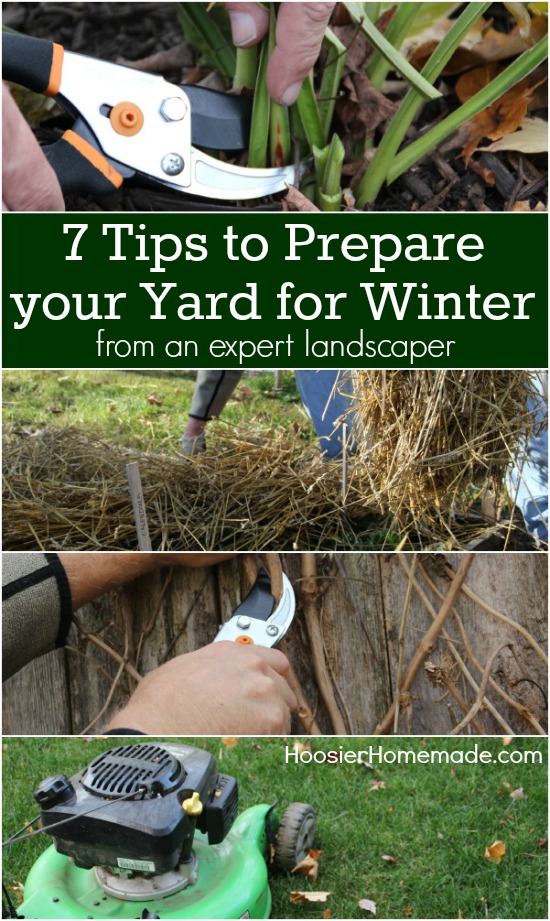
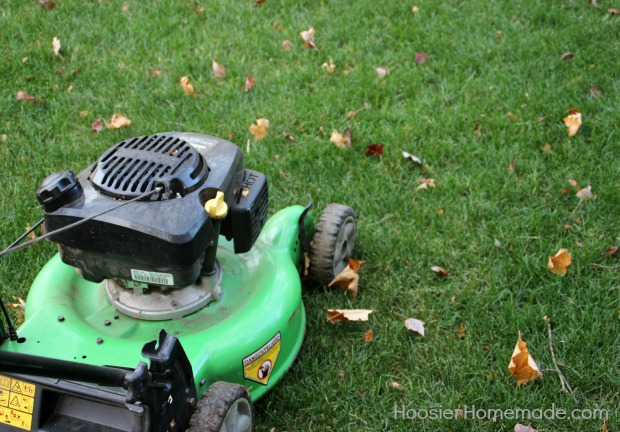
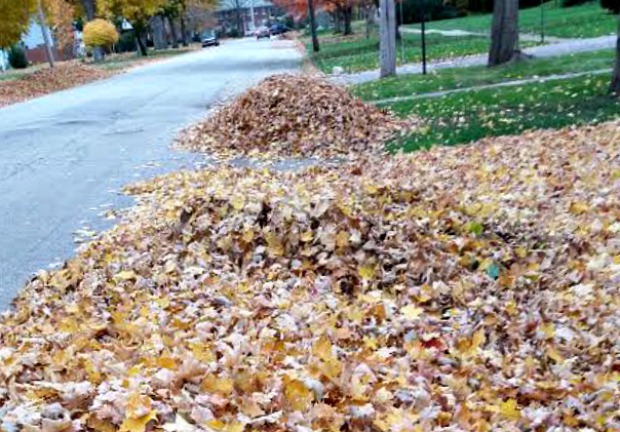
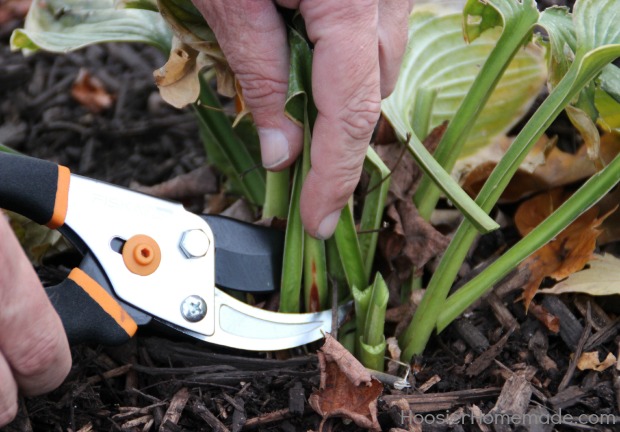
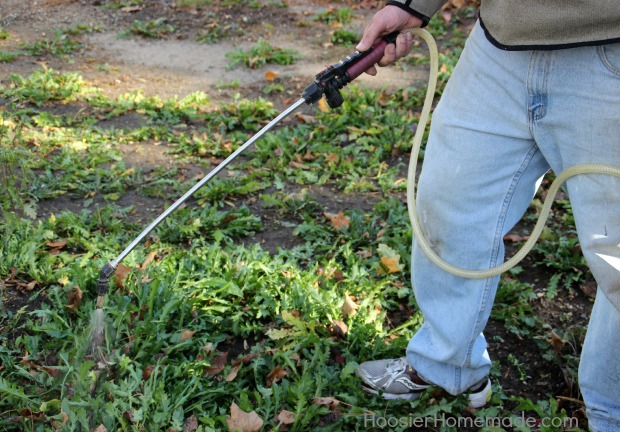
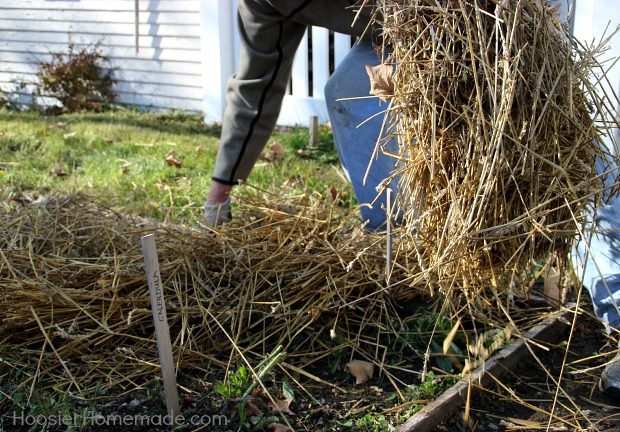
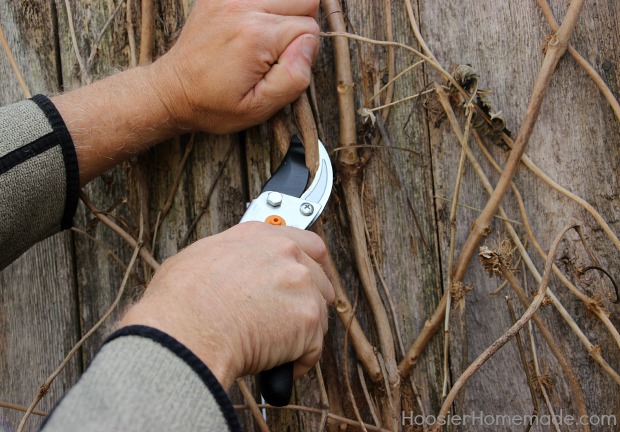
Hey folks, I am a former Hoosier, South Bend is my home town, moved to Fort Worth Texas many years ago. Fall is my favorite time of year. I actually look forward to the leaves in the yard because they provide organic material for my veggie garden. It is the only time of year that I use my bag attachment on my mower. The combination of shredded leaves (mostly Oak) and fescue grass clippings is the perfect mix to add to my square foot raised garden beds. In the spring it is all completely composted and the soil benefits immensely.
My wife and I have put a lot of work into our yard this past summer and we have been trying to figure out what we should do for the winter. We planted a lot of perennials and trees so we will definitely have to make sure that those are set to go for the cold weather. I will have to make a trip to a hardware store to get some other supplies for the tips that you have laid out. These will be really beneficial to our lawn, thanks for sharing!